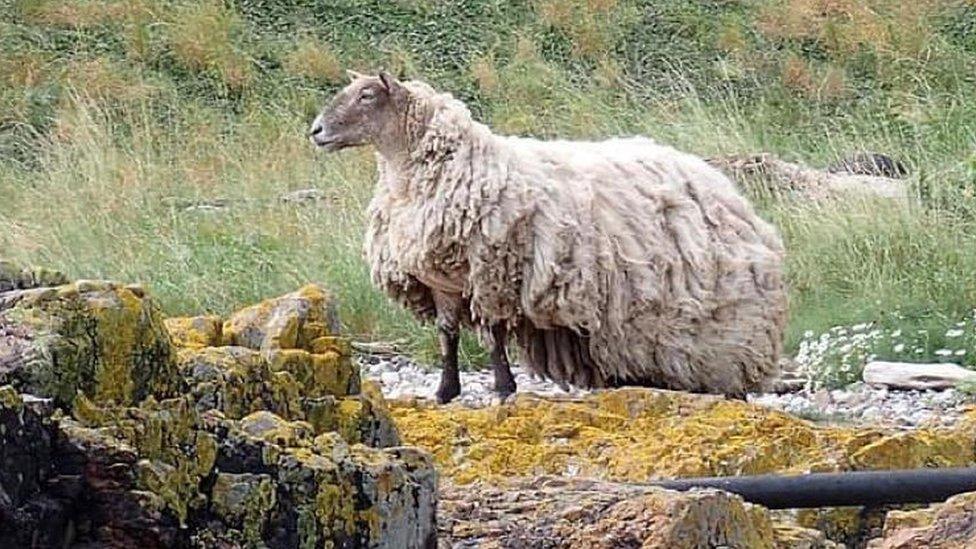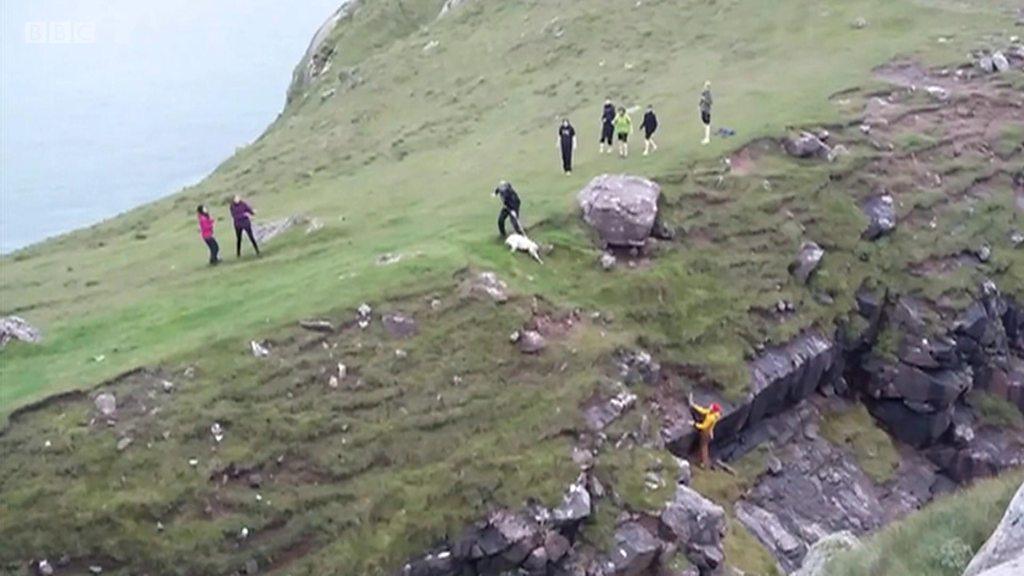Rescu-ewe me?: The challenges of reaching Britain's loneliest sheep
- Published

The sheep is on a shore of the Highland's Cromarty Firth
An animal welfare charity has been looking into the challenges of rescuing a ewe dubbed Britain's loneliest sheep.
The sheep may have been stuck at the bottom of cliffs on Scotland's Cromarty Firth for at least two years, according to a kayaker who first saw it in 2021.
A petition calling for a rescue of the sheep has gathered more than 52,000 signatures, while a hovercraft company has said it might be able to help, external.
But the Scottish SPCA said, so far, there is not a safe way of reaching it.
A group of kayakers encountered the sheep two years ago and again recently this year on a shoreline below steep ground and cliffs south of Brora.
They believe it is the same animal, but with its fleece badly overgrown.
The SSPCA said it has been aware of the stranded ewe for some time.
A spokeswoman said: "The sheep is not in any immediate danger and has ample grazing and water, however, we are aware they badly require shearing.
"We appreciate that there is growing concern for the sheep and we want to reassure the public that we are doing everything we can."
It is not known who owns the sheep because it does not have an identification tag fitted to an ear.
'Incredibly complex'
The SSPCA said it had considered a potential rescue with support from a local farmer.
But the spokeswoman said: "The area where the sheep is stranded is very inaccessible by both land and sea, making this rescue incredibly complex, especially due to the logistics of rescuing a large animal.
"We have been liaising with other agencies as to the best way to access the area but so far we have not found a suitable solution that doesn't compromise the safety of the rescue teams and the welfare of the sheep."
The SSPCA said due to the time the ewe had been stranded it was now deemed to be feral, and likely to be stressed by human contact.
"As this is not a domestic animal, both the coastguard and mountain rescue teams are unable to assist in this matter," the spokeswoman said.
"We have also spoken with a local skipper who has advised it would be extremely difficult to land a boat in the area.
"We have been given some contact information for other businesses who may be able to help and we are currently exploring these options."

Sheep are fitted with an ear tag by farmers to help confirm ownership
The spokeswoman said that even if there was a safe method of rescue, there were some additional challenges to consider.
"The sheep will be very difficult to catch without gates and hurdles and is likely to be fearful and run away," she said.
"If the sheep becomes too distressed, there is the possibility they may run into the sea, which will present further challenges.
"As the animal's fleece is overgrown, it will also prove difficult to temporarily sedate the animal which would have assisted with the rescue."
She said the SSPCA had received many kind offers of donations to support a rescue, and some people had expressed interest in rehoming the sheep.
The spokeswoman added that the ewe was likely to need a specialist home, if it was ever rescued.
Domestic sheep have been rescued from difficult terrain in the past.
In 2016, a climbing instructor went to the aid of a sheep on crags on the north west Highlands coast.
Paul Calton managed to lasso the animal before helping it to safety.
He had been instructing school pupils at Sheigra near Sandwood Bay.
In 2009, a ewe survived a jump of almost 25m (80ft) into a quarry in Lewis in the Western Isles, external.
- Published27 October 2023

- Published12 September 2016

- Published28 February 2012